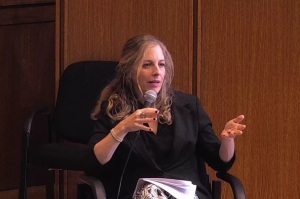How to Give an Effective Invitation (Without Crash Landing)
A few days ago I did a blog post about evangelistic sermons that crash at the altar call. Beautiful takeoff. Wonderful flight. Crash-landing.
Basically the premise of the post was that a lot of preachers/pastors/evangelists/youth leaders do a great job opening up their sermon and communicating the gospel but then, for some strange reason, they get confusing at the invitation.
After my rant I got some feedback from a youth leader who wanted more information about what a "good landing" looks like. Here are 5 things I do to make sure I don't crash land at the invitation:
1. Make sure the gospel has been presented clearly enough for a child to understand.
Is your gospel presentation clear enough for a 2nd Grader to grasp? Does it lay out the gospel in a simple way? If not, this acrostic that we use at Dare 2 Share may help guide your GOSPEL giving:
God created us to be with him.
Our sins separate us from God.
Sins cannot be removed by good deeds.
Paying the price for sin Jesus died and rose again.
Everyone who trusts in him alone has eternal life.
Life with Jesus starts now and lasts forever.
Let's remember the words of Paul to the believers at Colosse when it came to sharing the gospel, "Pray that I may proclaim it clearly, as I should." Colossians 4:4
2. Refuse to use terms that confuse what a person must do to be saved.
There are certain terms that many preachers use that are confusing at best. These terms can be ambiguous ("accept Christ"), confusing ("Let Jesus into your heart") or need more explanation ("repent.")
So what term do I use when explaining what a person must "do" to be saved? The same one that Jesus used most often. In John 6 Jesus was asked, "What must we do to do the works God requires?" He answered in verse 29, "The work of God is this: to believe in the one he has sent."
The book of John uses the word "believe" 98x's to describe faith as the only way of salvation. The Greek word for believe "pistou" is closer to our English word for "faith" or "trust". It is not mere intellectual accent ("I believe that Jesus existed.") Instead it represents a child-like trust, "I rely fully on Jesus, based on what he did for me on the cross, to save me from my sins."
When I give an invitation I use the word "trust" or "faith" in Jesus to describe the way of salvation. These words are simple, clear and, by far, what Jesus used the most to describe how a person was passed from death to life.
3. Ask them to put their faith in Jesus right where they sit.
There is nowhere in Scripture where people are asked to walk an aisle or say a prayer for salvation. They can trust Jesus in the quietness of their hearts right where they sit (or stand for that matter.)
That doesn't mean that I don't ever ask for a public response. It just means that before I ask for any public response I make sure they have a moment to put their faith in Jesus in the secret sanctuaries of their hearts. I usually say something like,
"Right where you sit put your faith in Jesus. Believe that he died for you on the cross and trust in him alone to forgive you from your sins. As soon as you do this you are adopted into the family of God and enter into a personal, permanent relationship with the God of the universe."
Regardless of the words you use don't be ashamed to ask them to trust in Jesus right then and there. Preachers that don't challenge the audience to put their faith in Jesus may not realize the urgency of salvation. This may be their last time they hear the good news before they leave this world. Wouldn't it be a shame if they weren't given a challenge to trust in Jesus right after they heard the gospel from you?
4. Make sure they understand saying a prayer doesn't save them.
There's gonna be a lot of people in hell who said the sinner's prayer but never genuinely put their faith in Jesus. Saying a prayer never saved anybody. It's a person faith in Jesus that saves them.
If you lead the audience through a prayer of salvation (which I often do) make sure they understand that reciting the words to a prayer doesn't save them. Saying a prayer is just a way of thanking God for the gift of salvation. No, the prayer doesn't save them. Faith in Jesus saves them.
When I lead an audience through a prayer I usually say something like this, pausing along the way to give them time to repeat them in the silence of their hearts,
"If you are trusting in Jesus today you can express your newfound faith in Christ by simply repeating these words in your heart to God, 'Dear God, (pause) thank you so much for sending your Son to die in my place for my sins. (pause) I believe Jesus died on the cross, was buried and rose again. (pause) I trust in him to forgive me for all of my sins. (pause) I receive this free gift of eternal life through faith right now." Then I remind them that this prayer didn't save them but their faith in Jesus does.
5. Give them an opportunity to respond.
After I give the gospel and have given them an opportunity to trust in Jesus right where they sit I give the audience someway to respond. Usually, I'll have the whole audience bow their heads and close their eyes. I'll ask those who are trusting in Jesus for the first time to raise their hands. Sometimes I'll have them walk an aisle or fill out a response card. But, almost always, I'll have them respond in some way.
There are those who say that a response to the gospel is not important. I remind them that there was always a public response in the New Testament when the gospel was preached. That response was water baptism.
While baptism doesn't save someone it is an important step that will accelerate a new believer's spiritual growth. It enables them to be publicly branded as a Christ follower.
I hope these five tips help you give a more effective and clear invitation.
No more crash landings!



























